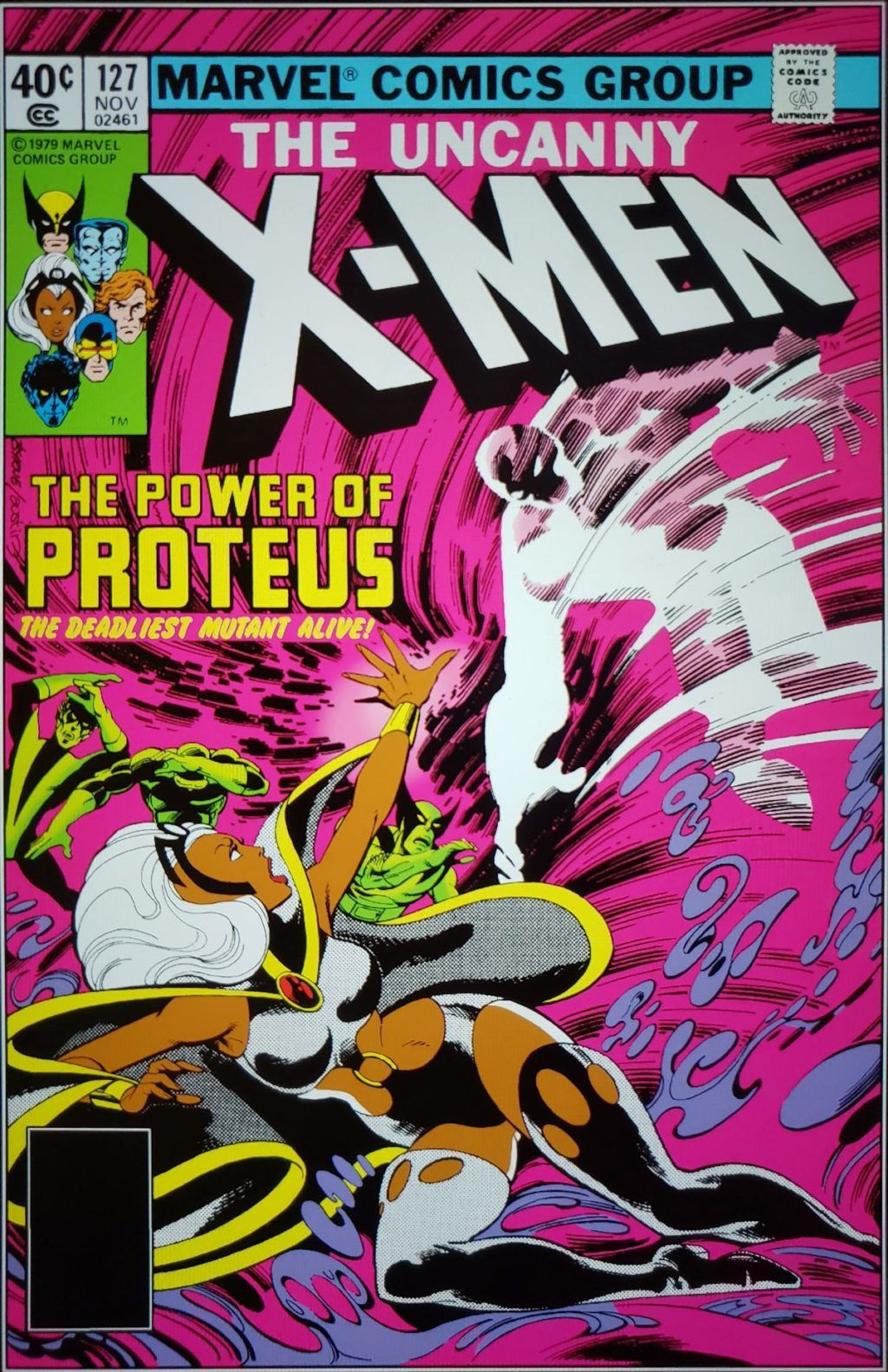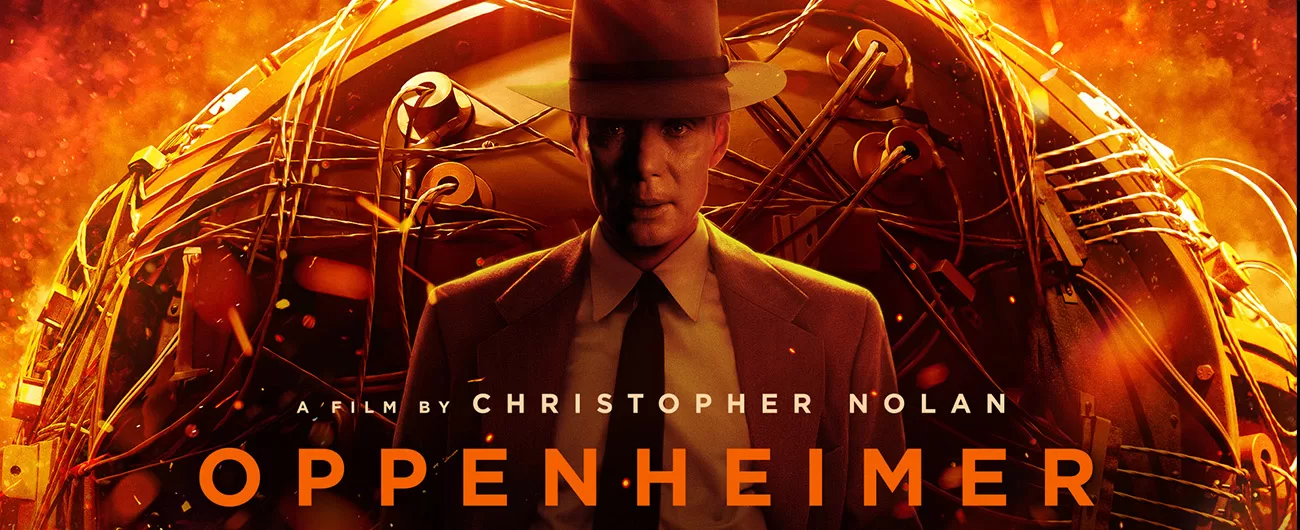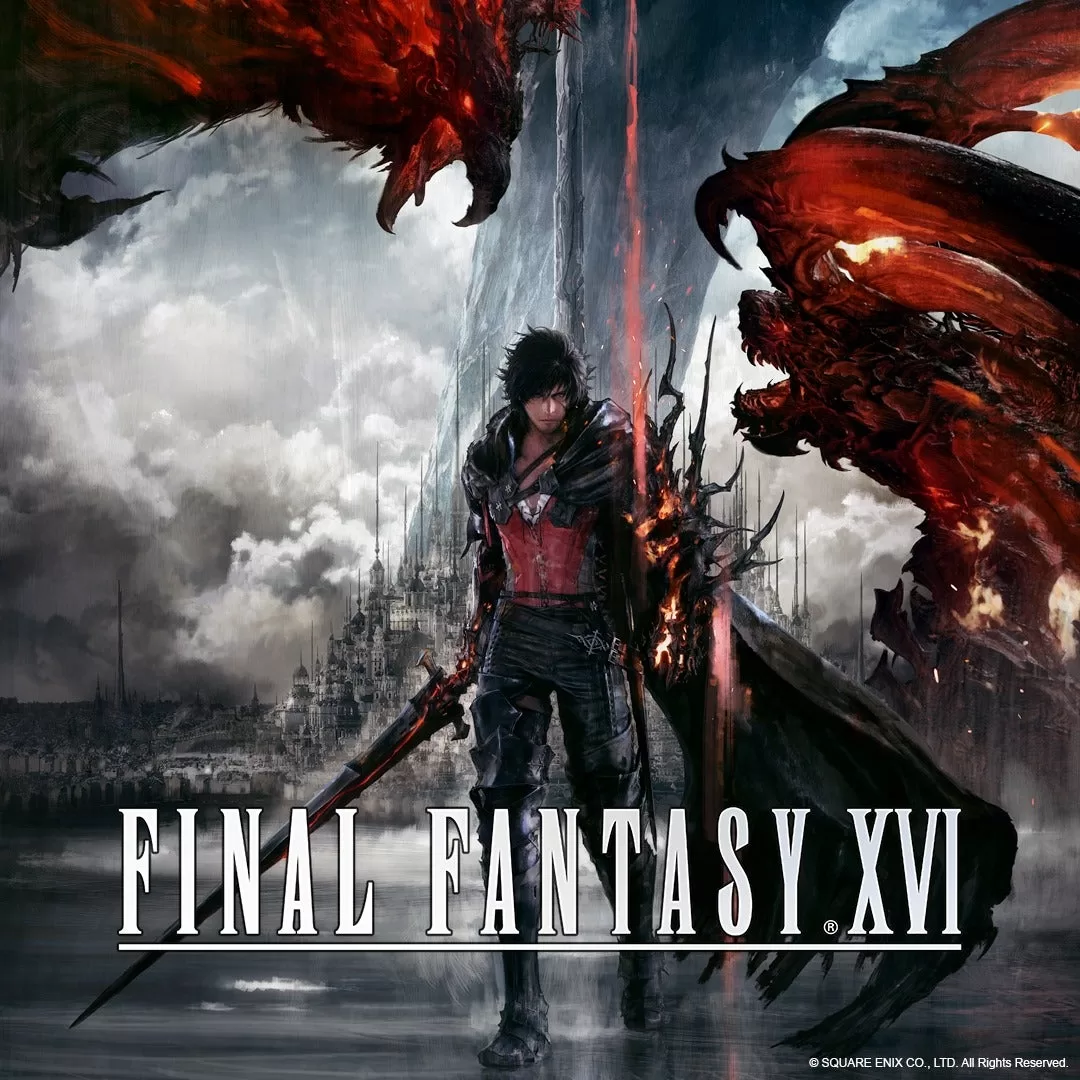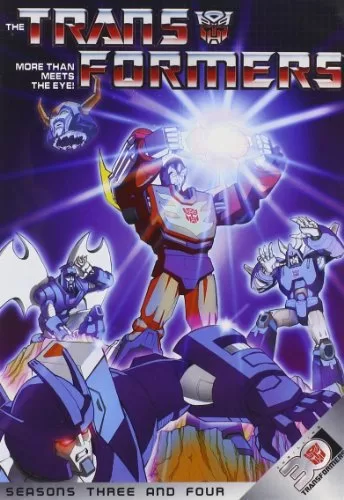
“A Circle of Violence”: A Retrospective of Claremont’s X-Men, Part 4
It“s midway through the Claremont and Byrne run that the X-Men truly began to take shape into their unique vision. Up until this point, the X-Men began their world tour, with the world believing the team was dead after a climactic battle with their arch-enemy Magneto. This led them through adventures in the prehistoric Savage Land, then to Japan, with a final stop in Wolverine“s home country of Canada.
John Byrne was probably the strongest influence on Wolverine at that time, perhaps because Byrne most strongly identified with him. It isn“t difficult to understand why. Byrne was Canadian himself, and he brought much of that into his work on the X-Men. His depiction of Calgary is one of the strongest points of the Alpha Flight story because it was grounded in a location that Byrne was familiar with. Also like Wolverine, Byrne was the best at what he did, and the art quality continued to improve during the time he worked on the character. Byrne also brought his own influence to the character, starting with the creation of Alpha Flight. Claremont was a writer who wrote to the strengths of his artists, and so Logan continued to take prominence in the book.
The idea of creating national heroes wasn“t a new one even in the late 70“s; Red Guardian had already appeared in Avengers well before then. However, Alpha Flight stands as one of the more memorable national teams, and they are one of the first true spin-off groups from the Claremont-era X-Men. This encounter had already been foreshadowed the year before, when Vindicator previously clashed with the X-Men. Wolverine“s resignation to join the X-Men was a major sticking point with James Hudson, who always wanted Logan to lead Alpha Flight. Instead, the result was Wolverine standing alongside the X-Men against his former team and his oldest friend.
Alpha Flight has their perfect opportunity to strike as the X-Men are forced to land in Calgary. It turns out that the diversion to Calgary is the working of Shaman, Alpha Flight“s resident mystic, who summoned a storm to bring the X-Men“s plane to ground. This leads into an effective hit-and-run chase in Calgary, forcing Cyclops to use the storm (with some help from Ororo) to provide cover for their escape. However, Alpha Flight gets the upper hand in the encounter, using the element of surprise to turn the situation to their favor.
It would have been easy to portray Alpha Flight as villains in this situation, especially since we“re meant to identify with Wolverine and the X-Men. However, one of the strongest points about this storyline is that Hudson and Alpha Flight are played as heroes the entire way through. Hudson shows compassion for his enemies, he“s always concerned with saving innocent lives, and he“s even willing to allow safe passage for the X-Men provided that Wolverine is returned to him. However, there“s a mutual distrust and animosity that leads to the fight on both sides. It“s also interesting that Claremont and Byrne have the gentle Colossus push some of the antagonism, in contrast to the more restrained Wolverine here. In the end, both teams are forced to put aside their animosity to restrain a runaway storm, fueled by Shaman“s magic.

The conflict comes to an end when Wolverine seemingly decides to turn himself in to the Canadian government. However, this proves to be a trick, with Logan taking advantage of Hudson“s safe conduct promise to sneak back to the mansion with the X-Men. Though Logan is best known for resolving problems with his claws, he can show real cleverness and self-discipline at times, and this instance is an important point in his larger character arc. It“s also a turning point in Logan“s relationship with Alpha Flight. This is the last time that we see Alpha Flight in a truly antagonistic role, and after this, we start to see them in a more friendly light.
The X-Men“s world tour ends as they arrive at the X-Mansion, which has been left abandoned for some time. The next few issues after this are somewhat quieter after the big climactic personal arcs and dramatic battles. Instead, the X-Men are picking up the pieces from the world believing them dead, trying to rebuild the team“s operations and their personal lives. Xavier has left to join Lilandra in the Shi“Ar Empire, where she is to be crowned Empress of the Shi“Ar. The X-Men still think Jean is dead, but unknown to them, she“s living in Muir Island with Moira MacTaggart. All this sets the stage for perhaps the greatest X-Men story of all time, but that“s to come with the next installment.
Scott and Jean have been separated for at least a year in publication time, and even in comic book time, it affects their relationship in unexpected ways. After moving from stoicism into grieving for Jean, Scott finally tries to move on with Colleen Wing, who he met in Japan. They date for these interim issues, and it“s clear that Scott means something to Colleen, because she offers him the key to her apartment. Scott/Colleen is a fairly interesting relationship, a more grounded and normal one than Scott tends to be associated with. In later years, we see his pattern of being drawn towards telepaths, especially those with a strong dark side like Jean or Emma Frost. Colleen is comparatively quite normal, but we see why she cares about Scott, and she“s very supportive of him during their time together. Once Jean returns, Colleen fades to little more than a footnote in Scott“s life, but she ranks among Scott“s more interesting love interests in the time she has with him.
At the same time, Claremont and Byrne are setting up their magnum opus with their development of Phoenix. It“s clear that Jean is becoming more and more confident in the use of her powers, almost to the point of flaunting them. Moira MacTaggart is used to reflect the doubts about what Jean“s change in personality means, both for her as a person and as Phoenix. At the same time, Jean being apart from Scott allows Claremont and Byrne to introduce a new love interest into Jean“s life. This is the mysterious Jason Wyngarde, a dapper gentleman who has a few pleasant encounters with Jean, but his dialogue suggests sinister motives. Jean also begins to make random time-jumps into the past, where she becomes “Lady”“ Jean Grey, who Jean believes to be an ancestor of hers. These subplots all eventually collide with the Dark Phoenix Saga.
Looking through these issues, it“s clear that one of the points Claremont and Byrne have in common is a mutual affection for Ororo. Claremont“s love for Ororo is well known, but Byrne draws her better than most of the X-Men around this time. Indeed, Byrne“s work on Ororo“s fashion designs is very elaborate and exquisite, and her white ensemble during “Cry For the Children”“ ranks among his absolute best. Storm comes across as a truly regal-looking character in these pages, though that quality would change in later redesigns. Byrne would also occasionally use Storm later in occasional projects, including X-Men: The Hidden Years. Regardless, John Byrne ranks easily among the best artists to draw Storm out of costume, and he“s still among her best artists in full costume as well. While Byrne is better known for characters like She-Hulk, the Invisible Woman, and the Scarlet Witch, his Storm is still among the better female characters he“s drawn over his very long career.

“Cry For the Children”“ is a single-issue Storm story that struck me when I first read it in Classic X-Men reprints, and it“s still an impactful story even today. Ororo returns to her childhood home in Harlem to reconnect with her past, only to find that it“s been taken over by a gang of young criminals. When they accost Storm, she“s forced to defend herself against children, and she“s brutally disillusioned from her old childhood nostalgia. Her hand is slashed in the fight, and it“s a battle she almost loses if not for the arrival of Luke Cage. After attending to her wounds, Cage tells Ororo what the old neighborhood has become after all her time in Africa. However, it also raises the difficult moral questions of what a superhero“s role is, and how much should a superhero be involved in societal problems like poverty, crime, and drug addiction. Claremont and Byrne don“t attempt to provide answers, but it“s a sobering story that reminds the reader of how powerless Storm is to change society even with the powers of a goddess. This is also one of the best X-Men issues to cross over with Power Man and Iron Fist, who would feature decidedly less in the series after this issue.
With personal business out of the way, Claremont and Byrne introduce the assassin Arcade to torment the X-Men. Arcade was already previously introduced in Claremont“s run on Marvel Team-Up, which focused on Spider-Man as he worked with an assortment of other Marvel heroes. In that story, Claremont had Spidey team up with Captain Britain, who is a significant character in Claremont“s larger mythos. Firstly, Captain Britain would be one of the main headliners of Excalibur, which would also feature X-characters like Nightcrawler and Kitty Pryde. Captain Britain is also the twin brother of Psylocke, who would become an X-Men mainstay in later years, and who would quickly become a favorite of Claremont“s. This is the first story that would connect, although very distantly, the Captain Britain universe and the X-Men universe.
Arcade“s involvement begins with Black Tom Cassidy and the Juggernaut, who hire the maniacal assassin to kill the X-Men. Presumably, Tom“s major concern is killing Banshee, his cousin and nemesis, who is his biggest obstacle in controlling the Cassidy family estate. Arcade has no interest in any of the personal drama, and his only real interest is entertaining himself by doing a job he loves””in this case, murder. The theme park of death motif is an interesting idea as executed here, even though Arcade evokes the murderous clown archetype and characters like the Joker. However, even though this is a good arc that establishes Arcade as a dangerous threat to the X-Men, he never quite becomes a lasting menace like other murderous clown villains. After Claremont leaves the X-books, Arcade mostly fades into obscurity and only rarely does anything worth mentioning. However, for a few brief shining moments, Arcade gets some real glory in these issues, learning from previous mistakes and finding creative threats to challenge the team.
The setup for this arc is extremely good, showing how the X-Men are captured one by one. Claremont and Byrne bring the focus of the first issue squarely on Spider-Man, the one person who knows Arcade and how dangerous he truly is. It“s an issue that spotlights how Claremont and Byrne might have handled Spider-Man, and one might wonder how they“d have approached a long-term run on the character at their creative height. While I doubt it would have worked out, not least because of Claremont and Byrne“s later friction, it“s a wonderful thing to imagine. This is especially true because neither had a truly landmark run on the character, either together or individually. John Byrne would take over Spider-Man in the late 90“s, but it was not a run that was well-received at that time. As for Claremont, his run on Marvel Team-Up is probably his most comprehensive statement on Spider-Man, at least aside from minor appearances he“d write elsewhere. In any case, Claremont and Byrne present a well-portrayed Spider-Man in the Arcade story, and Peter is memorable and interesting without overshadowing the X-Men too much in their own title.
The remainder of the story consists of the X-Men trying to escape from Arcade“s trap, an amusement park of death called Murderworld. Arcade has the advantage for most of the story, arranging deathtraps from his control center, where he also keeps the X-Men“s love interests as prisoners. The traps are also well designed, preying on the X-Men“s individual weaknesses and splitting them up to isolate each of the X-Men. Some of them are more visually interesting than particularly fun in terms of narrative, like Banshee“s holographic trap and Nightcrawler“s deadly bumper cars. Others are more character-focused, particularly in the cases of Cyclops and Wolverine. In the end, though, these are mostly obstacles to overcome rather than a focal point of the arc.

The one singular exception is Colossus, who has been wrestling with bouts of homesickness and self-doubt since the X-Men returned home. This is established in an earlier Danger Room session where Wolverine pulls a dangerous stunt to prod Colossus into saving his life. Some of these issues hit Peter as a family man who“s devoted to his relatives back home in Russia, especially his younger sister Illyana. Others focus more on Colossus“s sense of duty and the idea of being a good Russian, and his doubts about whether he“s betraying his country by helping the X-Men. Though some of these points are outdated after the fall of the Soviet Union, mostly the story still holds up, and this still stands as one of the better Colossus character arcs. All of this comes to a head when Arcade brainwashes Colossus into turning on his friends, using his doubts to turn him into the Proletarian. The Proletarian is essentially Piotr“s idea of a good Communist hero, the person that Piotr wishes to be. However, as much as he loves Russia, he cannot kill his friends in the name of patriotism. Deep down, Colossus cares too much about his friends for the brainwashing to hold, and he breaks free of Arcade“s conditioning with the help of the X-Men. In the end, this is a character subplot that deepens Colossus“s loyalty to the X-Men and strengthens his commitment to the team.
Following that year“s X-Men annual (which is notable solely for being Claremont“s only collaboration with George Perez), Claremont and Byrne start reaching their creative peak on Uncanny X-Men. This is the point where they begin to deliver landmark storylines, the kind that are remembered not only as great X-Men stories, but also as visionary and pioneering comics that shaped the industry. These are the stories that still impact X-Men comics to this day, and they are still fondly remembered as the greatest X-Men stories of all time.
This period begins with the Proteus Saga, which is still a classic even though it may be the comparative runt of the litter. After the Beast discovers that the X-Men are alive, they return to Muir Island at the request of Moira MacTaggart. Once there, they learn a horrible secret””a highly dangerous mutant named Mutant X (later calling himself Proteus) has escaped from confinement on Muir Island and has been killing people. Proteus possesses host bodies, and feeds on the host“s life energy until he or she is dead. Worse, he even has the mutant power to manipulate reality, limited only by his need for life energy and a strong aversion to metal. Even with these limitations, the X-Men barely manage to overcome Proteus, and he“s a candidate for one of the team“s most powerful foes.
Claremont and Byrne drastically show how horrible this power is by killing one of the Multiple Man“s “dupe”“ bodies, leaving Proteus in possession of the dupe. Jamie Madrox has the power to clone himself, and this is the first time one of his “dupes”“ would be killed in action. The moment where Jamie expresses how a part of him died with the clone body shows Claremont“s gift for characterization, even for minor characters who serve only a small role. Jamie Madrox is a character with a fascinating power, and while it took two runs by Peter David to fully explore it, this moment hints at those possibilities. Indeed, the Proteus killing is directly referenced early in Peter David“s first X-Factor run, where another Madrox dupe is killed. What Claremont and Byrne intended as a minor moment to create fear of Proteus (which is successful) also builds the foundation for Madrox“s entire character in later runs.

After a failed attempt to track down and subdue Proteus, Claremont reveals the true shocking moment, and with it, the emotional heart of the Proteus story. Moira MacTaggart has not been telling the truth about who Mutant X is, but given the danger, she has no choice but to tell Cyclops the whole story. Proteus is Moira“s son, conceived by an act of sexual violence committed by her estranged husband Joe. Claremont is very delicate in his choice of language, probably because of the editorial standards and the Comics Code at the time. However, it“s very clear that he intended Proteus as a way of exploring the ramifications of domestic violence and its effect on the children left in its wake. These scenes, even including Moira“s confrontation with her estranged husband, are extremely deftly written, conveying the depth of the issue while remaining within Code standards. This isn“t the first or last time Claremont would try to slip mature ideas under the radar, but it is one of his most effective ones.
The Proteus Saga is a deep examination of the generational cycle of violence and hatred, all nestled within a pop action-adventure tale. Joe“s assault on Moira left emotional scars that made it impossible for her to be a loving parent to their son Kevin. This damaged Kevin on a deep level, made all the worse when his powers manifested. Proteus inherited his father“s capacity for violence and domination, and his mother“s eternal hatred for Joe MacTaggart, all fueled by emotional immaturity and unrestrained mutant power. All Kevin MacTaggart learned from his parents was how to hate, how to violate and dominate others to get what he wants. He was a child that never learned love or kindness, only anger, violence, fear, and imprisonment. At the same time, Proteus is also the kind of person that the X-Men ideally should most want to save””a young man with great power that he can“t control, with drawbacks that render him a threat to everyone around him. There is an aspect of Proteus that make him sympathetic despite his numerous crimes; his conception and upbringing were not Kevin“s fault, and he was never truly given a choice to be what he is. He was born a monster, as his father was a monster, and he becomes a monster in order to survive. At the same time, Proteus is a foe that is so powerful, so dangerous, and so murderous that the X-Men have no choice but to violate their most sacred rule in order to defeat him.

This is not a decision that is taken lightly by the X-Men, and indeed, the moral ambiguity is one of the greatest strengths of the Proteus Saga. In the end, they have no choice but to kill Proteus, because he is simply too powerful for them to restrain. The more energy he absorbs from host bodies, the more powerful he becomes, and the more his ability to warp reality grows. The only viable strategy is the one Cyclops commits to””wear down Proteus with constant attacks, then use Colossus“s metal form to destroy Proteus. Ultimately, this is another act of violence that puts an end to the threat of Proteus, and even if it“s defensive violence, it forces the X-Men to abandon their principles. At this point, the X-Men still generally abided by their no-kill rule (Wolverine aside), but it was with Proteus that their morals started to waver on that front. Claremont mostly leaves the readers to make their own conclusions, though he does explore the ethical question from different viewpoints. This may, in the end, be the X-Men“s no-win scenario, where people suffer and die needlessly no matter what the X-Men do.
The Proteus Saga is an unsung classic, or at least, a respected story within the X-Men canon that gets overshadowed by later efforts. Claremont and Byrne took a tremendous risk with this story, and there are many points where it could have failed under anyone less than them. The art should also be commended in this story, because Byrne does a tremendous job of portraying how horrific Proteus truly is. Moreover, the scenes of Proteus“s reality warping convey a strong sense of disorientation and disconnection from reality. As noted in previous installments, Byrne was good at drawing horror as well as costumed heroes, and this is one of the better instances of this in his X-Men. His storytelling had reached astronomic levels by this point, and he still had room to grow as an artist even at this level. All this contributes to one of the finest stories in the X-Men canon.
As a brief aside, I find it strange that the Proteus Saga was never brought to film. Moira was introduced in X-Men: First Class, and enough time had passed in-universe that Proteus could have been done rather easily if the creators wanted. Proteus is a story that hasn“t often been touched in media, and yet it“s arguably the most memorable story of the Claremont/Byrne era after Dark Phoenix and Days of Future Past. It“s a story with a strong emotional heart, it strikes to the core of the X-Men“s purpose, and it raises complex moral issues without simple answers. One wonders how the Fox franchise might have ended if they“d adapted Proteus instead of taking yet another shot at the Dark Phoenix Saga. Now, with the film rights acquired by Disney, it“s unlikely that we“ll see a storyline with such heavy, mature themes brought to the big screen.
Next time, we“ll begin a comprehensive discussion of the Dark Phoenix Saga and its lasting effects on the X-Men canon. Dark Phoenix is a long and extensive story with numerous moving parts, and it also introduces several characters with a massive impact on the series. We“ll also get into the ramifications of this story, and how it affected the characters and the creators who would later work on them. A single spark would fan into a flame that would consume the X-Men”¦ and it all begins with a girl named Kitty Pryde.
Author Profile
- Steve Sellers had been a fan of superheroes ever since Superman: The Movie. But it took the JSA, the Legion of Super-Heroes, Dragonlance, Lord of the Rings, Twilight Zone, and Chris Claremont's legendary run on the X-Men to make him a writer and a longtime fan of comics, fantasy, and science fiction. Steve is the co-creator of WHITE DRUID & MICHAEL NERO and GUARDIANS OF ELAYIM for Omen Comics, and he is also the creator of BLITZ and SHOCKWAVE for Revelation Comics (an imprint of Omen Comics).










